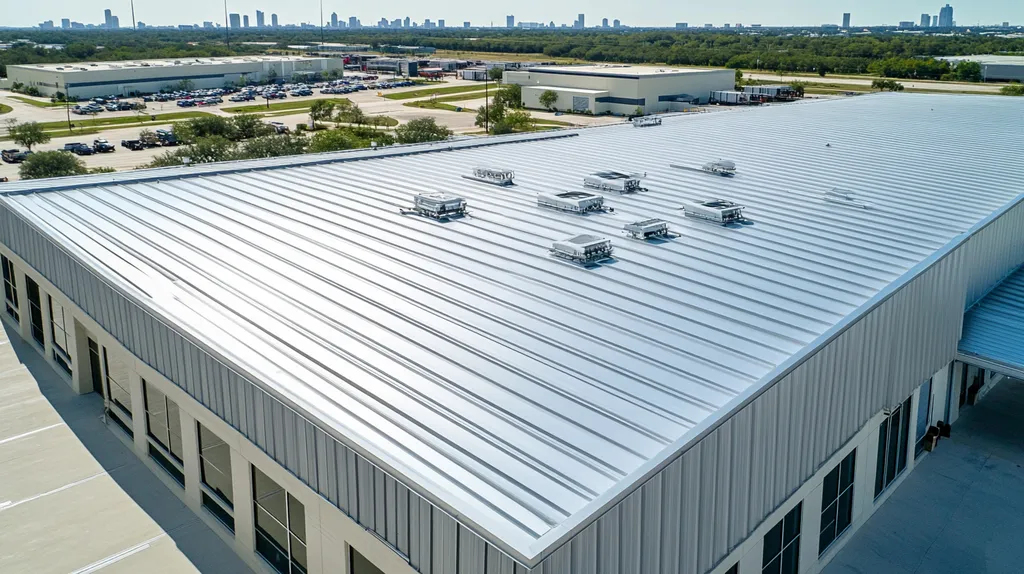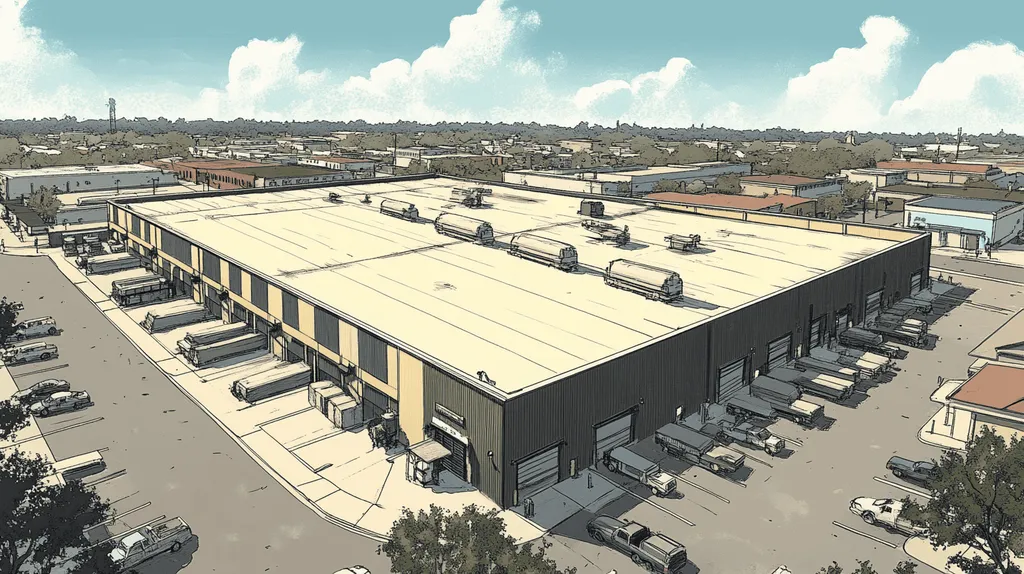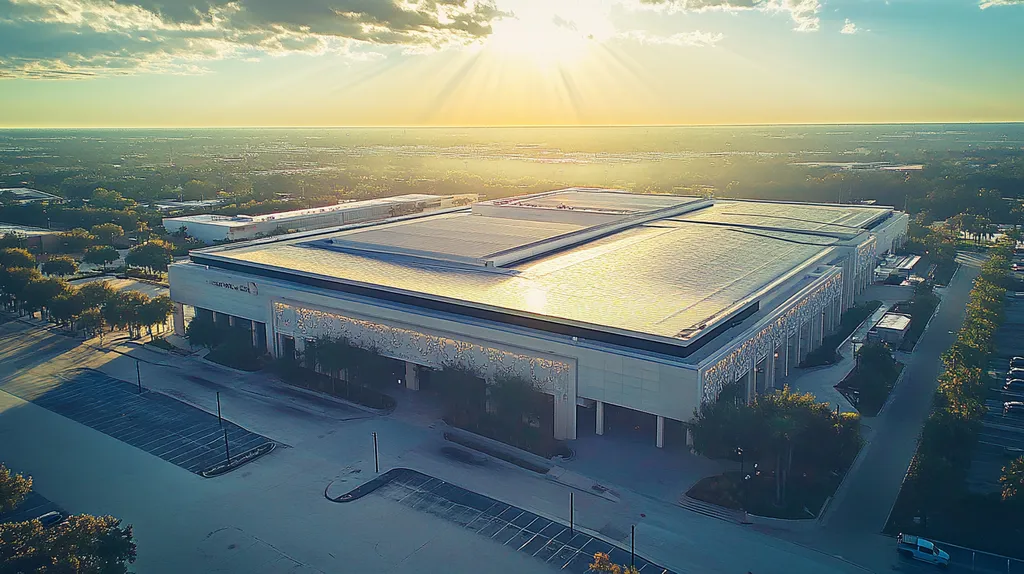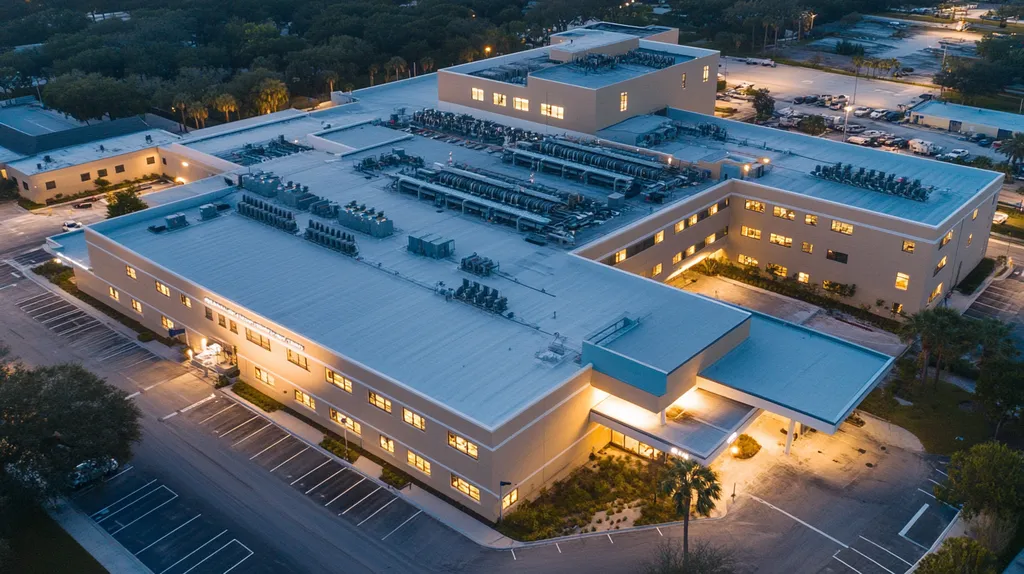Welcome to today’s Battle Royale featuring two roofing heavyweights: “Polyurethane Coatings” in the east corner versus “Silicone Coatings” in the west!
Tonight’s showdown pits these contenders against each other across six punishing rounds designed to test every aspect of their performance for Industrial Roof Performance Metrics.
At stake? Millions in potential costs, decades of building protection, and the critical performance demands of modern commercial and industrial facilities.
Our professional judging panel will evaluate each round on technical merit, real-world performance, and value delivery. After all six rounds, we’ll declare our ultimate champion.
Ladies and gentlemen, facility managers and building owners… it’s time to rumble!
ROUND 1: INITIAL COSTS & INSTALLATION
When selecting a roofing coating system, the initial investment and installation process can impact both immediate budgets and long-term facility operations. Property managers face critical decisions that affect not just the roof, but the entire building’s protection and operational efficiency. Understanding the true costs and complexities of installation helps prevent expensive mistakes and ensures optimal performance.
Material Expenses
Material costs represent a significant portion of any roofing project’s budget, directly affecting return on investment calculations. Modern coating materials have evolved significantly, offering enhanced performance characteristics that justify their price points.
Polyurethane coatings command premium prices due to their advanced polymer technology and superior mechanical properties. Recent innovations in acrylic polymers have improved dirt resistance and enhanced overall durability, making these investments more worthwhile. (source: BASF Insights)
Silicone coatings generally cost 15-25% less per square foot than their polyurethane counterparts. This lower entry point makes them particularly attractive for projects with strict budget constraints.
For material expenses, silicone coatings claim the “ADVANTAGE” due to their lower initial cost, though long-term value considerations may tell a different story.
Installation Complexity
Installation procedures directly impact labor costs and project success rates. Complex installations require more skilled labor and increase the risk of application errors.
Polyurethane systems demand strict environmental controls and multiple application steps. Their sensitivity to moisture during installation requires careful monitoring of weather conditions and surface preparation.
Silicone coatings offer simpler single-layer applications with fewer environmental restrictions. Their forgiving nature during installation reduces the likelihood of application errors and minimizes rework requirements.
For installation complexity, silicone coatings earn the “ADVANTAGE” through their straightforward application process and reduced labor requirements.
Project Timeline
Time is money in commercial roofing, with each day of installation affecting facility operations. Efficient project completion minimizes disruption to building occupants and business activities.
Polyurethane installations typically require longer cure times between coats. Multiple layers mean extended project durations, often requiring 2-3 days longer than comparable silicone installations.
Silicone coatings can usually be completed in a single day, with rapid cure times allowing for quicker project completion. This efficiency translates to reduced facility disruption and faster return to normal operations.
For project timeline considerations, silicone coatings secure the “ADVANTAGE” through faster installation and cure times.
ROUND 1 WINNER: SILICONE COATINGS
ROUND 2: DURABILITY & LIFESPAN
When industrial roofs fail prematurely, the consequences ripple throughout the entire facility. Water damage, equipment failures, and production disruptions can cost companies millions in repairs and lost revenue. Understanding how different coating systems perform over time isn’t just about maintenance – it’s about protecting critical business operations and assets.
Weather Resistance
Industrial roofs face relentless assault from UV radiation, temperature swings, and moisture. These environmental stressors can quickly break down inferior coatings, leading to expensive failures and repairs.
Polyurethane coatings excel in UV resistance and maintain their physical properties even after years of sun exposure. Their superior chemical bonds create exceptional resistance to thermal cycling and oxidation, helping prevent premature aging and deterioration.
Silicone coatings offer excellent resistance to moisture and ponding water scenarios. However, they can be more susceptible to physical damage from hail and may show faster degradation in areas with extreme temperature fluctuations.
For weather resistance, polyurethane coatings earn the “ADVANTAGE” through their superior all-around environmental durability.
Physical Durability
Industrial roofs must withstand maintenance traffic, equipment installations, and potential chemical exposures. A coating’s ability to maintain its protective properties under these demands directly impacts its service life.
Polyurethane coatings provide exceptional resistance to impacts, abrasion, and chemical exposure. Their cross-linked structure creates a tough, flexible membrane that resists tearing and maintains its protective properties even under heavy foot traffic.
Silicone coatings, while durable, tend to be softer and more prone to physical damage. Their lower tensile strength can make them more susceptible to tears and punctures, particularly in high-traffic areas or during maintenance activities.
For physical durability, polyurethane coatings claim the “ADVANTAGE” through superior mechanical properties.
Long-term Performance
A coating’s ability to maintain its protective properties over time determines its true value. Initial performance means little if the system degrades rapidly or requires frequent maintenance.
Polyurethane coatings typically maintain their physical properties for 15-20 years with proper maintenance. Their resistance to dirt accumulation and ability to withstand cleaning procedures helps extend their effective service life.
Silicone coatings can deliver 10-15 years of reliable service, with excellent resistance to moisture throughout their lifespan. However, their tendency to attract dirt can reduce solar reflectivity over time, potentially affecting building energy efficiency.
For long-term performance, polyurethane coatings secure the “ADVANTAGE” through their superior maintenance of protective properties.
ROUND 2 WINNER: Polyurethane Coatings
ROUND 3: PERFORMANCE FACTORS
Every minute a commercial roof coating fails to perform as specified, facility managers face increased risks of water damage, energy loss, and operational disruptions. Modern industrial facilities demand roofing solutions that deliver consistent protection against increasingly extreme weather conditions while maintaining their protective properties under heavy maintenance traffic and equipment installations.
Durability
A coating’s durability directly impacts the protection it provides to valuable equipment and inventory below. Industrial environments present unique challenges, from chemical exposures to frequent foot traffic from maintenance crews.
Polyurethane coatings provide exceptional resistance to physical abuse through their advanced polymer structure. Their superior tensile strength and tear resistance make them ideal for high-traffic areas and facilities with frequent maintenance requirements.
Silicone coatings offer good flexibility but demonstrate lower resistance to physical damage. While they maintain their waterproofing properties well, their softer composition makes them more susceptible to punctures and tears from maintenance activities.
For durability, polyurethane coatings claim the ADVANTAGE due to their superior mechanical strength and abuse resistance.
Weather Resistance
Weather resistance determines how well a coating maintains its protective properties under extreme conditions. The increasing frequency of severe weather events makes this characteristic more critical than ever.
Polyurethane coatings demonstrate excellent resistance to UV radiation, temperature cycling, and chemical exposure. Their molecular structure provides outstanding protection against oxidation and color fading, even in harsh environments.
Silicone coatings excel in moisture resistance but can show accelerated degradation under intense UV exposure. While they handle ponding water effectively, their performance in extreme temperature variations may be less consistent.
For weather resistance, polyurethane coatings secure the ADVANTAGE through their comprehensive environmental protection capabilities.
Maintenance Requirements
The frequency and complexity of required maintenance directly affects both operational costs and facility disruption. Finding the right balance between performance and maintenance needs is crucial for long-term success.
Polyurethane coatings typically require regular cleaning to maintain their reflective properties. Their surface can accumulate dirt over time, potentially reducing energy efficiency if not properly maintained.
Silicone coatings feature natural dirt-shedding capabilities that reduce cleaning requirements. Their smooth surface resists debris accumulation and maintains reflectivity with minimal intervention.
For maintenance requirements, silicone coatings earn the ADVANTAGE through their self-cleaning properties and reduced maintenance needs.
ROUND 3 WINNER: POLYURETHANE COATINGS
ROUND 4: MAINTENANCE REQUIREMENTS
In today’s industrial facilities, roof maintenance isn’t just about preserving an investment – it’s about preventing catastrophic failures that can shut down operations and damage millions in equipment. With increasingly extreme weather patterns and rising energy costs, the maintenance requirements of roof coatings directly impact both operational continuity and bottom-line performance.
Regular Inspection Requirements
The frequency and complexity of required inspections directly impact facility maintenance budgets and staff resources. A coating system that demands constant monitoring can strain maintenance teams and increase operational costs.
Polyurethane coatings require quarterly professional inspections to identify potential issues early. Their complex chemical structure makes them more sensitive to environmental damage, necessitating careful monitoring of surface integrity and adhesion.
Silicone coatings typically need only bi-annual inspections due to their simpler molecular structure and superior weather resistance. Their natural resistance to UV radiation and moisture reduces the need for frequent professional assessment.
For inspection requirements, silicone coatings claim the “ADVANTAGE” through reduced monitoring needs and lower inspection costs.
Cleaning and Surface Maintenance
IR reflective coating performance has become increasingly critical for industrial facilities seeking to optimize energy efficiency. Modern coating systems must maintain their reflective properties while handling industrial pollutants and environmental contamination. (source: Grand View Research)
Polyurethane coatings require monthly cleaning to maintain optimal reflectivity and prevent degradation. Their textured surface tends to trap dirt and debris, demanding regular pressure washing to preserve performance.
Silicone coatings feature self-cleaning properties that reduce maintenance frequency to quarterly sessions. Their smooth surface naturally sheds dirt and contaminants during rainfall, helping maintain reflective properties with minimal intervention.
For cleaning requirements, silicone coatings secure the “ADVANTAGE” through inherent self-cleaning capabilities.
Repair and Recoating Cycles
The frequency and complexity of repairs and recoating directly affect long-term maintenance costs. Systems requiring frequent touch-ups or complete recoating create significant operational disruptions and ongoing expenses.
Polyurethane coatings typically need touch-up repairs every 2-3 years and complete recoating every 7-10 years. Their multi-layer structure makes repairs more complex and time-consuming.
Silicone coatings can often go 5-7 years between touch-ups and 12-15 years before requiring complete recoating. Their single-layer application simplifies repairs and reduces recoating complexity.
For repair cycles, silicone coatings earn the “ADVANTAGE” through extended service intervals and simpler repair procedures.
ROUND 4 WINNER: SILICONE COATINGS
ROUND 5: SUSTAINABILITY CREDENTIALS
As environmental regulations tighten and energy costs soar, roofing sustainability has moved from a “nice-to-have” to a critical business requirement. Modern industrial facilities face mounting pressure to reduce their carbon footprint while maintaining operational efficiency. The right coating choice can dramatically impact a facility’s environmental performance, energy consumption, and long-term ecological footprint.
Energy Efficiency
A roof coating’s ability to reflect solar radiation directly impacts building energy consumption and operating costs. In industrial facilities, where cooling demands can represent up to 40% of energy usage, coating reflectivity becomes a crucial sustainability metric.
Polyurethane coatings maintain consistent reflectivity over time due to their superior dirt resistance. Their dense surface structure helps prevent degradation of reflective properties, contributing to sustained energy savings throughout their service life.
Silicone coatings offer exceptional initial reflectivity values of 87%, along with impressive weathered reflectivity retention of 77%. Their natural resistance to UV damage helps maintain these high reflectance values with minimal maintenance. (source: Rust-Oleum)
For energy efficiency, silicone coatings claim the ADVANTAGE through superior initial and maintained reflectivity values.
Material Lifecycle Impact
The environmental impact of roofing materials extends far beyond their installation. From raw material sourcing to end-of-life disposal, coating choices affect a facility’s overall ecological footprint.
Polyurethane coatings require energy-intensive manufacturing processes and contain chemical compounds that can be challenging to recycle. However, their extended service life helps offset some of these environmental impacts.
Silicone coatings utilize more environmentally friendly production methods and offer better recyclability options. Their simpler chemical structure makes them easier to process at end-of-life, reducing landfill impact.
For material lifecycle impact, silicone coatings secure the ADVANTAGE through better recyclability and reduced manufacturing impact.
Resource Conservation
The ability to extend roof life and minimize replacement frequency directly affects resource consumption and waste generation. Sustainable coatings must balance immediate environmental impact against long-term conservation benefits.
Polyurethane coatings excel in preventing premature roof replacement through superior physical protection. Their resistance to mechanical damage and chemical exposure helps preserve underlying roofing materials, reducing waste.
Silicone coatings provide excellent waterproofing but may require more frequent renewal in high-traffic areas. Their lower physical durability can lead to increased material consumption over time in demanding industrial environments.
For resource conservation, polyurethane coatings earn the ADVANTAGE through superior protection of underlying materials.
ROUND 5 WINNER: SILICONE COATINGS
ROUND 6: SPECIALIZED APPLICATIONS
In today’s complex industrial environments, choosing the wrong specialized coating can lead to catastrophic failures costing millions in damages and lost production time. Modern manufacturing facilities face unprecedented challenges, from caustic chemical exposures to extreme temperature variations that can destroy standard roofing materials within months.
The elastomeric coatings segment now dominates 67.1% of the industrial roofing market, highlighting the critical importance of selecting the right specialized coating for each unique application. (source: Grand View Research)
Chemical Resistance
Industrial environments expose roofing systems to a wide range of chemical agents, from acidic rain to alkaline processing emissions. These chemical exposures can rapidly degrade inferior coatings, leading to premature failure and costly repairs.
Polyurethane coatings demonstrate exceptional resistance to industrial chemicals, including oils, solvents, and acids. Their advanced polymer structure creates a nearly impenetrable barrier that maintains its protective properties even under sustained chemical exposure.
Silicone coatings offer good resistance to water-based chemicals but show vulnerability to petroleum products and strong solvents. Their molecular structure can break down under prolonged exposure to harsh industrial chemicals.
For chemical resistance, polyurethane coatings claim the ADVANTAGE through superior chemical barrier properties.
Temperature Extremes
Modern industrial facilities must maintain stable interior environments while enduring dramatic external temperature swings. Coating performance under temperature extremes directly impacts energy efficiency and structural integrity.
Polyurethane coatings maintain their flexibility and protective properties from -40°F to 180°F. Their molecular structure resists cracking and delamination even under rapid temperature cycling.
Silicone coatings perform well in high temperatures but can become brittle in extreme cold. Their temperature performance range typically spans from -20°F to 160°F before material properties begin to degrade.
For temperature extremes, polyurethane coatings secure the ADVANTAGE through wider performance range and better stability.
Impact Resistance
Industrial roofs must withstand frequent impacts from maintenance traffic, equipment installation, and falling debris. Impact resistance determines how well a coating maintains its protective integrity under these constant physical challenges.
Polyurethane coatings offer superior impact resistance and maintain their protective properties even after repeated strikes. Their tough, resilient surface disperses impact energy while resisting punctures and tears.
Silicone coatings provide moderate impact resistance but can be more susceptible to mechanical damage. Their softer composition makes them more vulnerable to punctures and tears from sharp impacts.
For impact resistance, polyurethane coatings earn the ADVANTAGE through superior mechanical durability.
ROUND 6 WINNER: POLYURETHANE COATINGS
AND THE WINNER IS…
After six grueling rounds of technical analysis, with millions in facility protection on the line, we have our verdict!
In a split decision that had our judges sweating through every metric, POLYURETHANE COATINGS claims the championship belt, winning 3 rounds to 2 (with one draw)! This heavyweight champ dominated the critical categories of Durability & Lifespan, Performance Factors, and Specialized Applications, showcasing superior chemical resistance, impact protection, and long-term performance under extreme conditions.
But don’t count silicone coatings out of the fight! This worthy challenger proved its mettle in Installation Costs, Maintenance Requirements, and Sustainability credentials. For facilities prioritizing quick installation, minimal maintenance, or maximum energy efficiency, silicone remains a formidable contender.
IMPORTANT RINGSIDE NOTICE: Every building brings its own unique conditions to the match. Local climate, facility operations, and specific property requirements can dramatically impact coating performance. This analysis provides general guidance only – consult with qualified roofing professionals who can evaluate your facility’s specific needs before making your final decision.
Remember, champions: In the high-stakes arena of industrial roofing, victory doesn’t go to the biggest name – it goes to the coating system that best matches your building’s specific performance demands. Choose your fighter wisely!
FREQUENTLY ASKED QUESTIONS
Q. What are the initial costs for commercial roof coatings?
A. The initial costs for commercial roof coatings can vary significantly. Polyurethane coatings tend to be more expensive due to their advanced properties, while silicone coatings offer a lower entry price. It’s crucial to consider not just initial costs but also potential long-term performance when making your decision.
Q. How do polyurethane coatings compare in durability for industrial roofs?
A. Polyurethane coatings excel in durability for industrial roofs due to their strong resistance to impacts and chemicals. They maintain protective properties over a longer span, making them suitable for high-traffic areas. This level of durability is vital for protecting the investments and assets underneath the roof.
Q. What factors determine the performance of commercial roof coatings?
A. The performance of commercial roof coatings is determined by factors such as durability, weather resistance, and maintenance requirements. Coating systems that excel in these areas help minimize risks of water damage and energy loss, ensuring operational efficiency within the facility.
Q. How often should maintenance be performed on commercial roofs?
A. Maintenance frequency can vary based on the coating system used. Polyurethane coatings usually require quarterly inspections, while silicone coatings can be inspected bi-annually. Maintaining regular check-ups ensures that potential issues are addressed before they escalate into costly repairs.
Q. What are the sustainability credentials of industrial roof coatings?
A. Sustainability credentials include energy efficiency and material lifecycle impact. Silicone coatings tend to perform better in initial and maintained reflectivity, helping to reduce energy consumption. The choice of coating can significantly influence a facility’s overall environmental footprint, impacting long-term sustainability efforts.
Q. Are there specialized applications for industrial roof coatings?
A. Yes, specialized applications include environments with extreme chemical exposures or temperature fluctuations. Polyurethane coatings typically offer better resistance to harsh chemicals, while silicone coatings are suitable where moisture resistance is critical. Selecting the right coating is essential for maintaining roof integrity in specialized settings.
Q. What is the difference in impact resistance between coatings?
A. Polyurethane coatings generally offer superior impact resistance compared to silicone coatings. Their durable structure allows them to withstand repeated physical challenges, making them more suitable for high-traffic industrial roofs where heavy equipment and maintenance activities are common.










